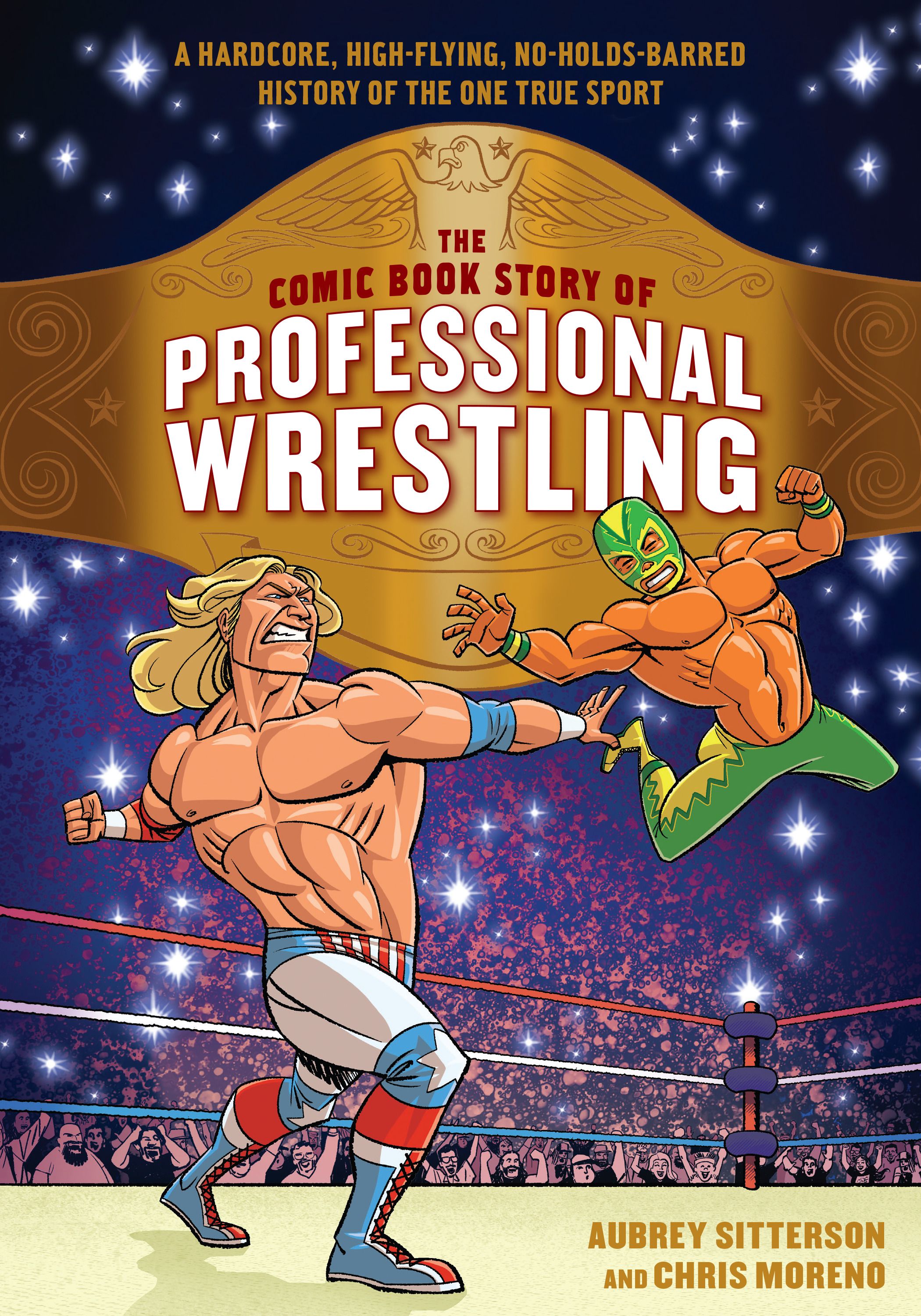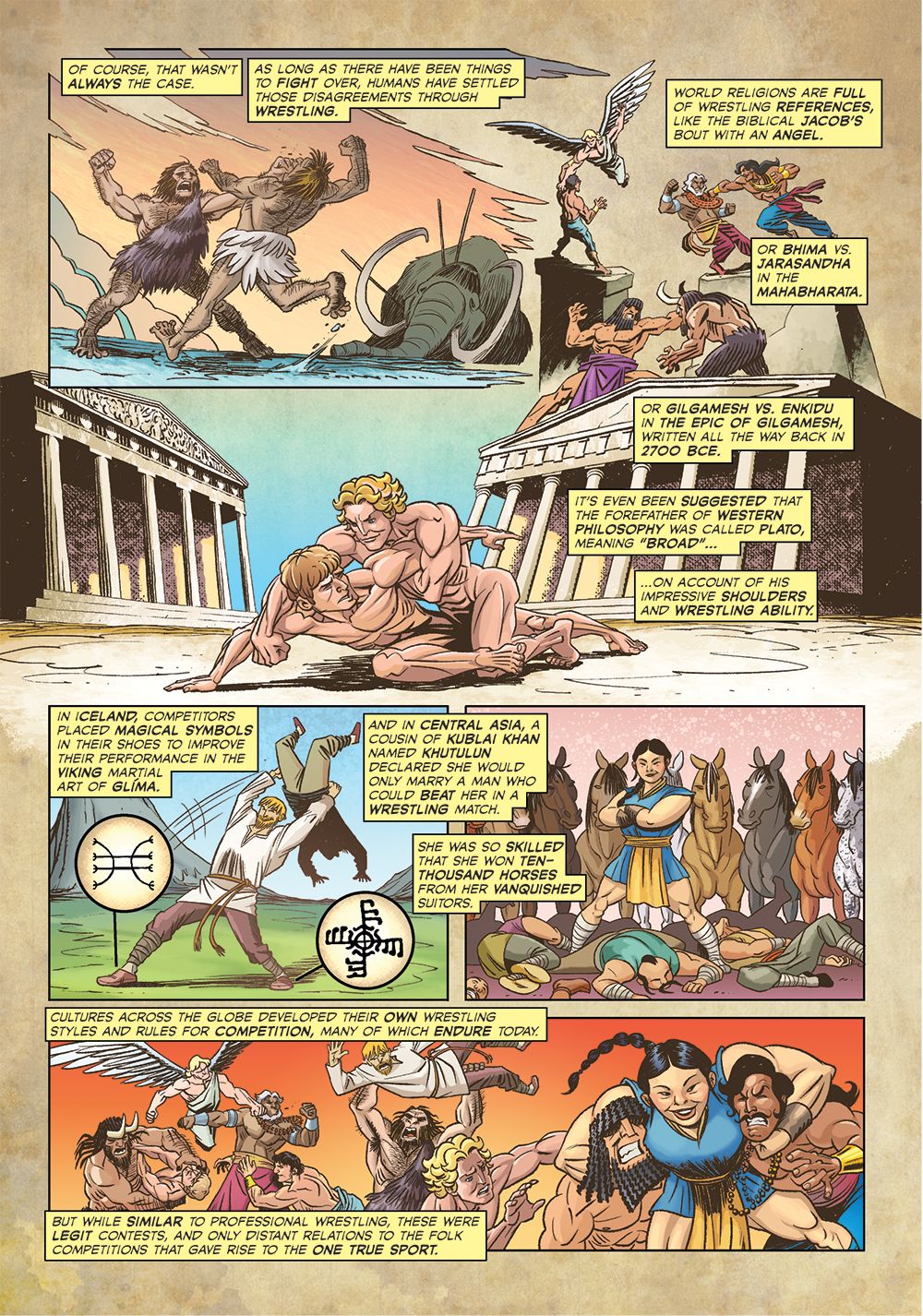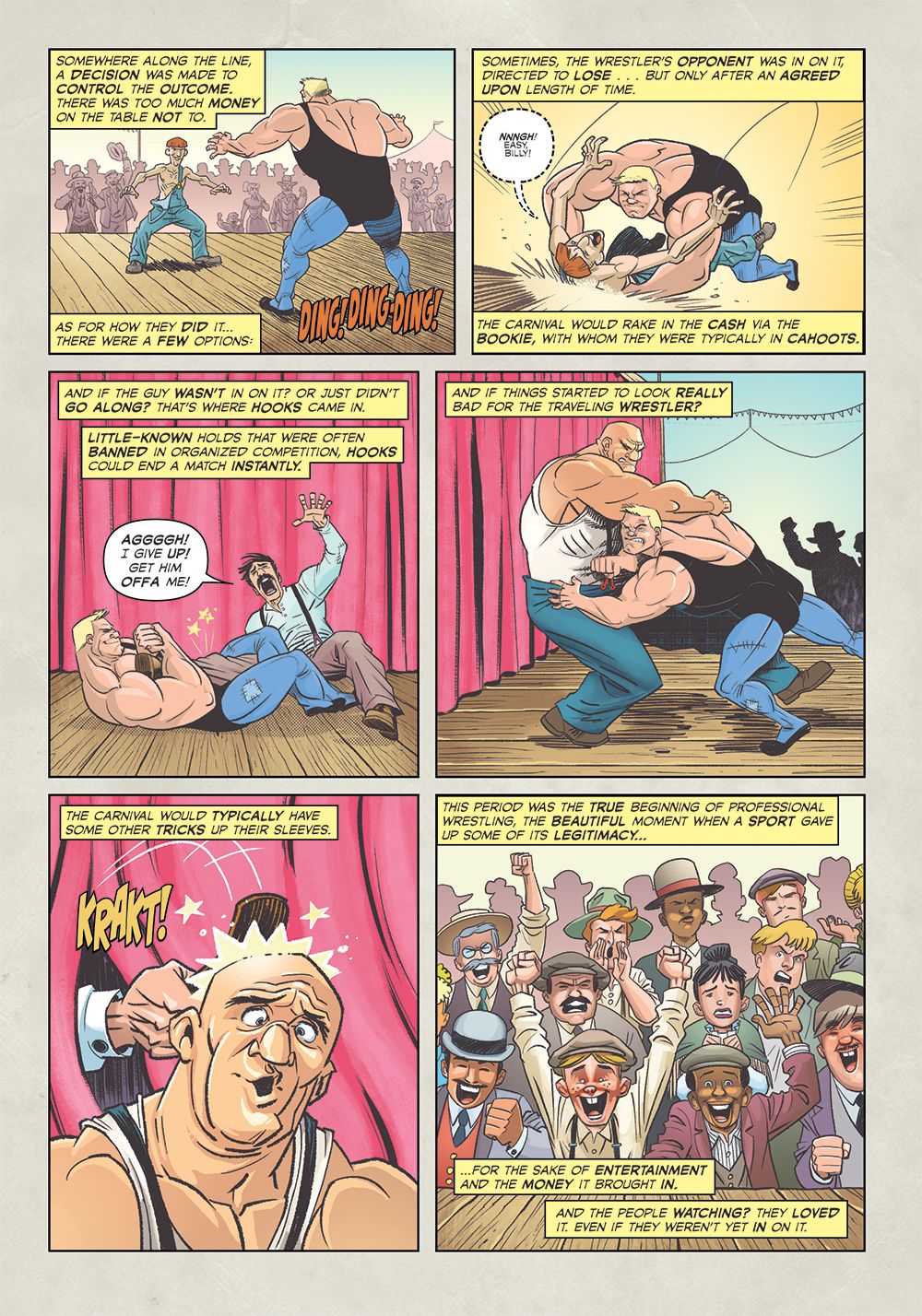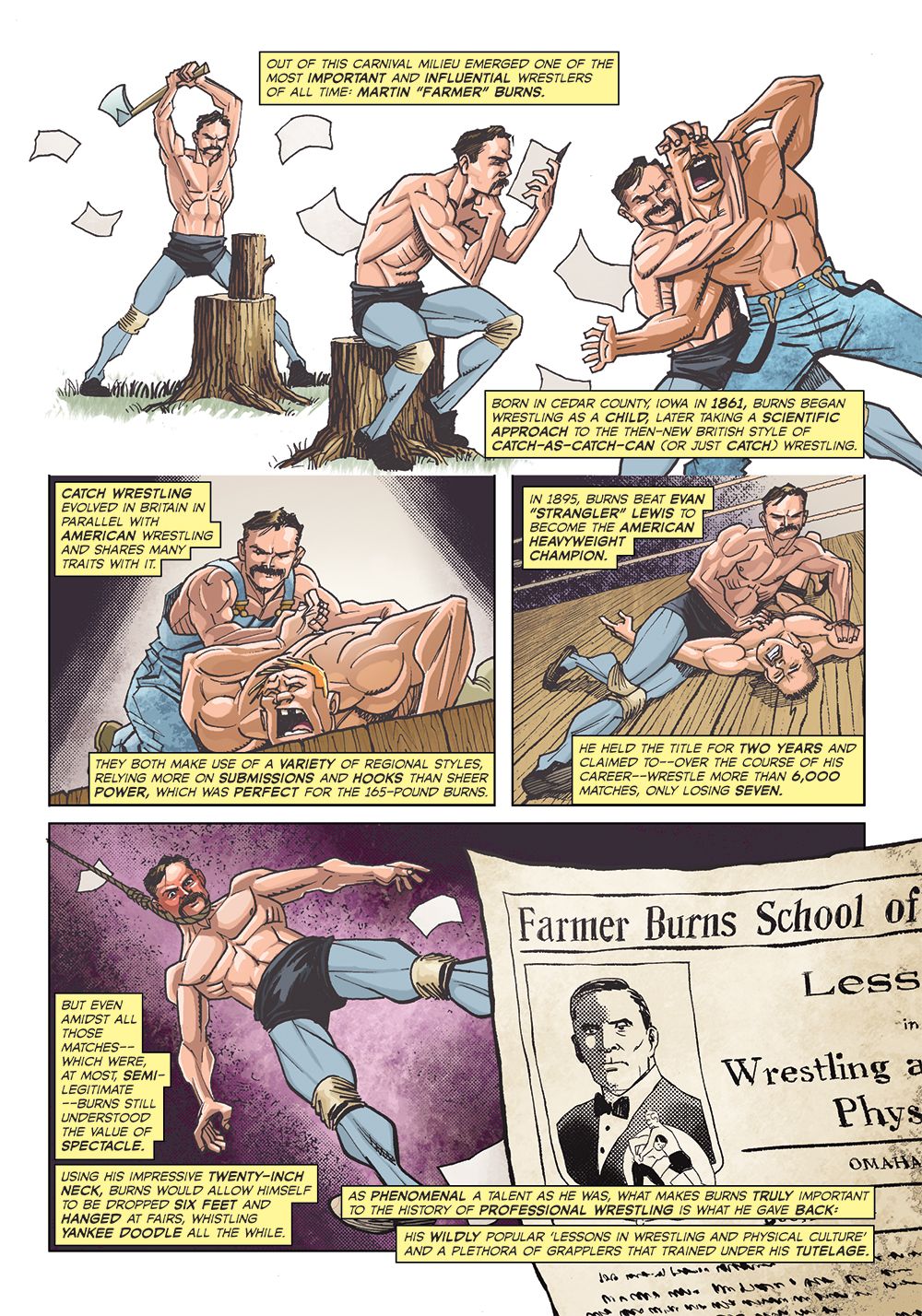Much has been made of the shared commonalities between professional wrestling and comic books -- over-the-top action, stories of good vs. evil, giant muscles -- and one upcoming book takes it to the next natural step. The Comic Book Story of Professional Wrestling is an illustrated history of "the one true sport," ranging from the carnival days to modern-day WWE and independent wrestling.
The book is written by Aubrey Sitterson, of IDW Publishing's G.I. Joe and the host of recently wrapped pro wrestling podcast Straight Shoot, and illustrated by Chris Moreno, artist of Sidekick and art director of the new Muppet Babies animated series. The Comic Book Story of Professional Wrestling won't be released until Oct. 9, but CBR has a preview of the book on this very page -- along with some color commentary from Sitterson and Moreno.
RELATED: WWE’s Samoa Joe Jumps From Comic Book Fan to Comic Book Writer
Aubrey Sitterson: The book goes chronologically (for the most part), so we don't get to the '80s wrestling boom until chapter seven. But we thought it was important to start big, and there's not much bigger than Andre the Giant, unless its Andre the Giant taking on Hulk Hogan at WrestleMania III. This isn't just the first page, it's a statement of intent for the entire book.
Chris Moreno: Getting to draw stuff like this was really the big appeal for me. I lived for WWF as a kid. I loved comic books and superheroes, and pro wrestling was like the real-life version of that. Drawing Andre was super tough, considering there've already been a number of comics about Andre published. So finding a stylized version of him that was unique was a challenge. The crowd scenes can be time-consuming, but I love drawing them just to create these little character moments in the scene -- like the guy in Panel 4 who kisses his wife he's so happy.
Sitterson: When people ask me how far back we go with our wrestling history, I tell them "cavemen fighting over a mammoth." I love this page not only because of the way it puts wrestling in a historical context, but because we get to see Chris draw so many different eras and ethnicities. Now we just need to convince him to do that Khutulun book with me as a follow-up!
Moreno: Khutulun is my favorite character out of this bunch, so of course I gave her the upper hand(s) in the last panel. The idea of a woman who bested her suitors and won a horse each time is so great. I picture her visiting them every day in a giant stable with their names on the stalls, combing their hair. I want a Wes Anderson-style montage of all of her horses.
Sitterson: Jumping ahead a little here, this is one of my favorite eras of wrestling, because it's when wrestling actually became wrestling. One of the things we keep coming back to is that wrestling is less like comics or television than it is a con or a magic trick, and that identity has its origins in the carnival scene of the late 19th century. Just as importantly: That dude getting sapped makes me laugh every time I see it.
Moreno: I love the old-timey stuff. Dudes in handlebar mustaches and overalls beating the tar out of each other. Our colorist for this chapter, Len O'Grady, did a great job of differentiating the different time periods. The colors are still saturated, but almost like colorized black and white photos. And you'll recognize that crowd seen here in Panel 6 as the same as the one seen in Page 1. I thought it'd be a fun running gag to use the same crowd, but dressed for different time periods. They're like our Greek chorus. That excitement of the gathered masses is what fuels the whole history of pro wrestling.
Sitterson: One of the things I found interesting while writing the book is looking back at which wrestlers received a full page – it's a quick, imperfect way of assessing a grappler's impact. So of course Farmer Burns got a full page! The dude is the ancestral source of all American wrestling, combining legit grappling with incredible showmanship.
Moreno: Any guy whose act consisted of hanging himself while whistling Yankee Doodle knows a little something about showmanship. Sweet 'stache, too! This montage in the first panel was an homage to those one-panel Batman origins they used to do in the comics where they show Bruce Wayne training to become Batman. I used this a couple more times in the book, especially for these early guys, who were very much multi-disciplined athletes.
Reprinted with permission from The Comic Book Story of Professional Wrestling copyright © 2018 by Aubrey Sitterson and Chris Moreno. Illustrations copyright © 2018 by Chris Moreno. Published by Ten Speed Press, an imprint of Penguin Random House LLC.





